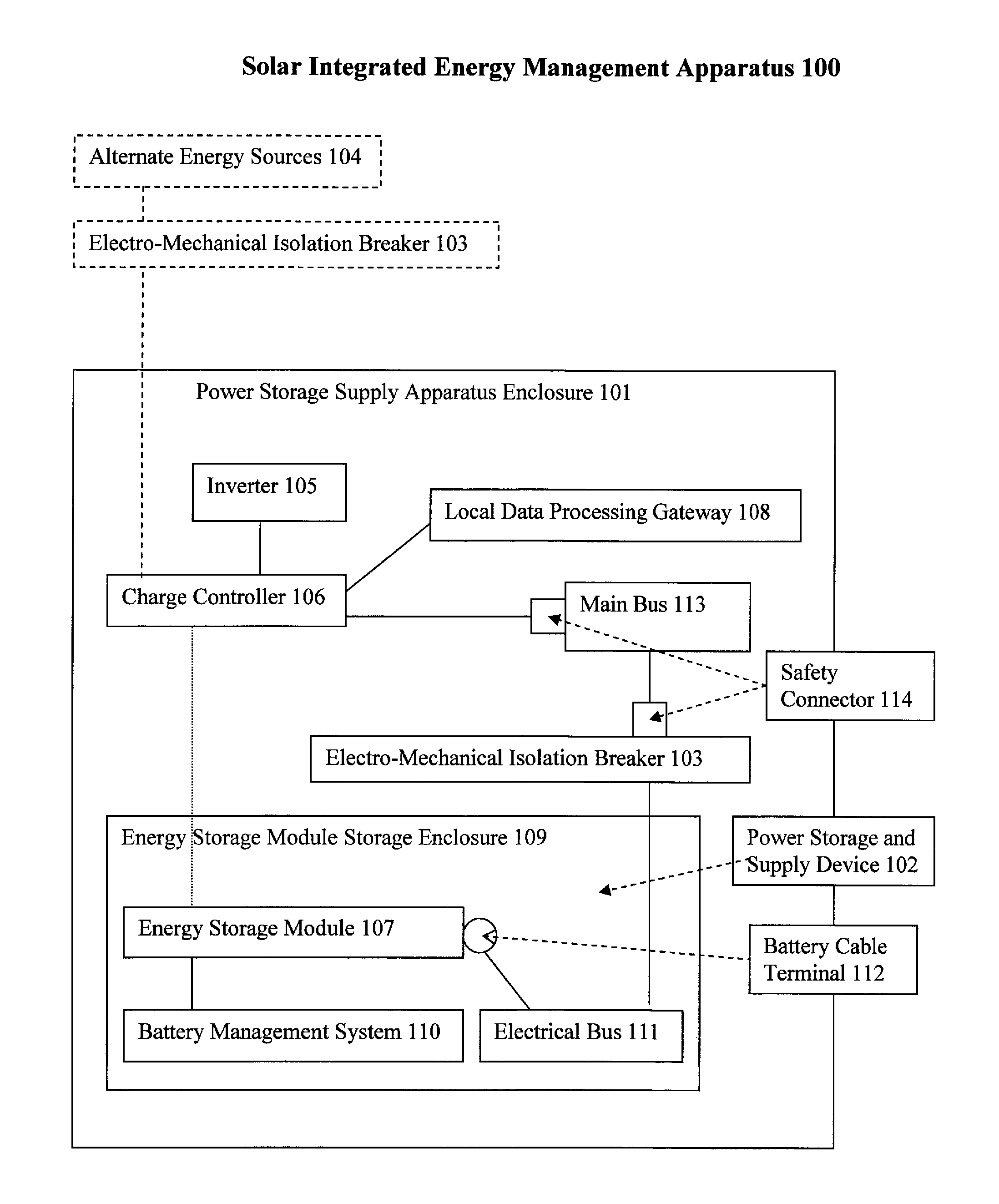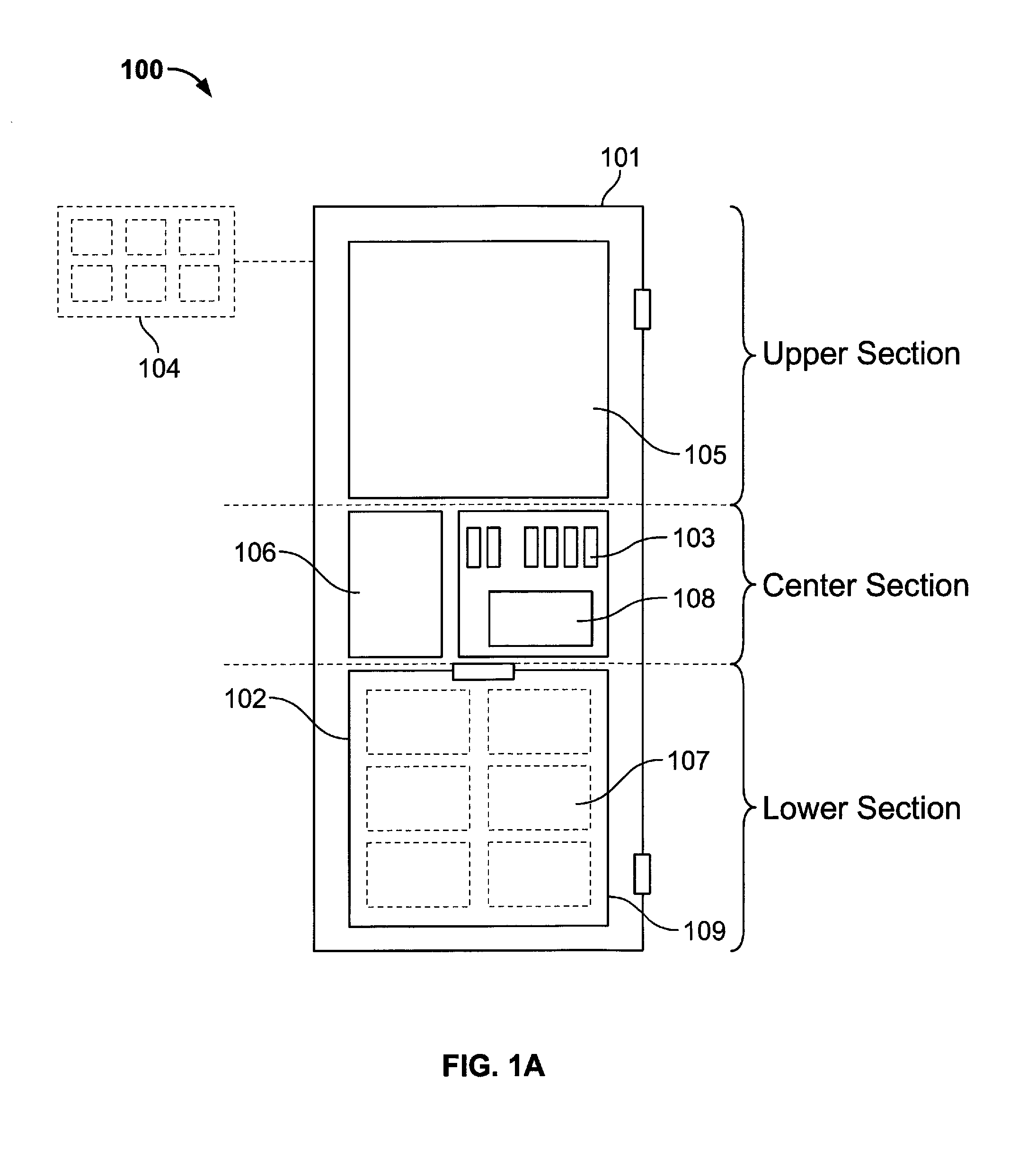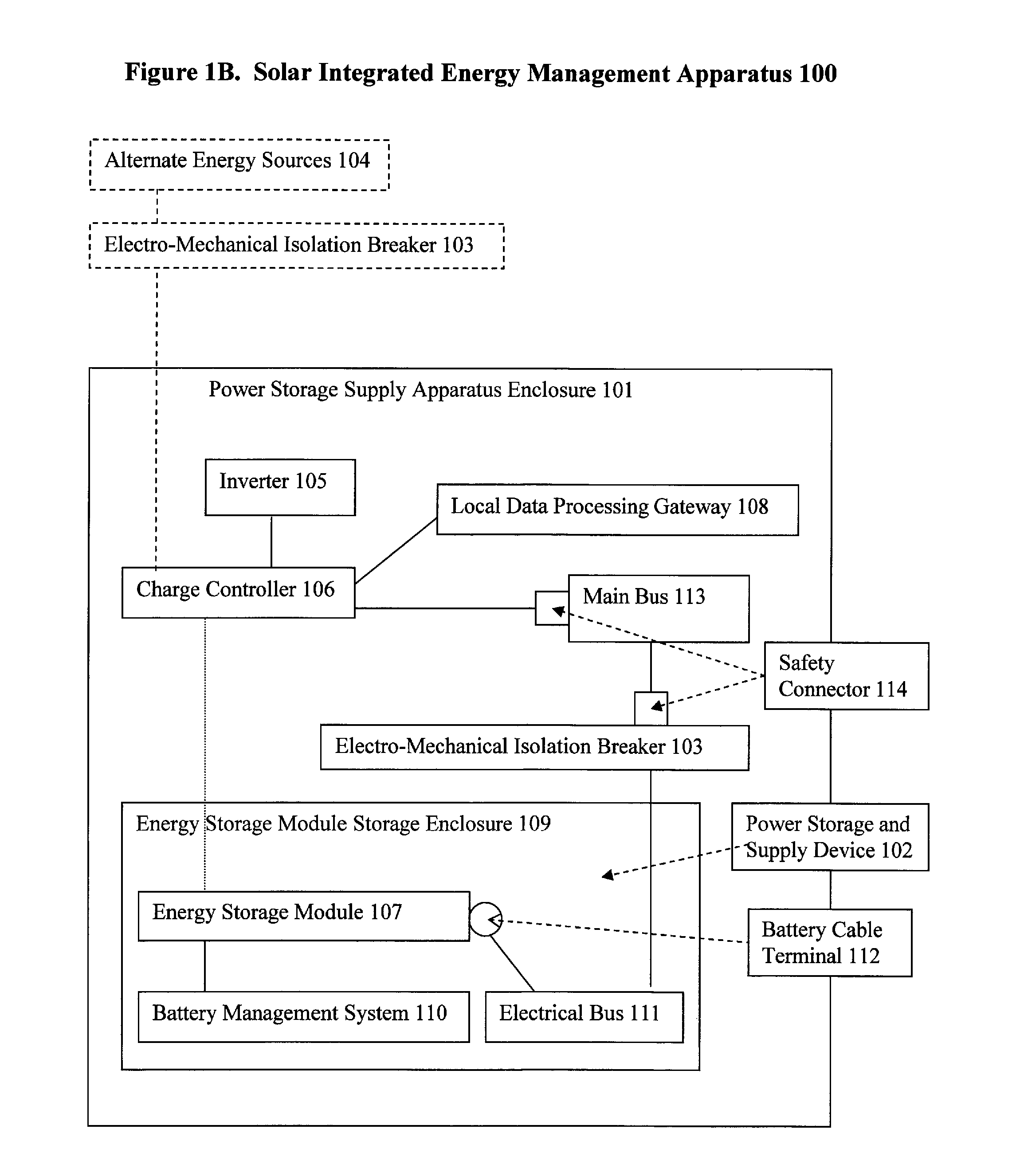Systems, apparatus, and methods of a solar energy grid integrated system with energy storage appliance
a solar energy grid and energy storage technology, applied in the direction of mechanical power/torque control, process and machine control, climate sustainability, etc., can solve the problems of limited extent, large and cumbersome residential and commercial power storage and supply devices, and limited use of alternative energy sources in conjunction with such power storage and supply device systems, so as to prevent tampering
- Summary
- Abstract
- Description
- Claims
- Application Information
AI Technical Summary
Benefits of technology
Problems solved by technology
Method used
Image
Examples
Embodiment Construction
[0093]The present invention is directed to a device the present invention is directed towards a system, method, and device for integrating distributed energy sources, energy storage, and balance of system components into a single device with systems and control for monitoring, measuring, and conserving power generated on the premise, the resale of power to a utility, power generated from distributed energy storage (e.g., batteries) and distributed energy sources (e.g., solar panels). Moreover, the device is minimally invasive, modular, and retains power-generating capacity, which is combined with load management and energy storage to provide energy at or near the point of consumption.
[0094]The present invention can be further illustrated as a device that integrates the necessary components into a tamper resistant, utility grade, minimally invasive enclosure designed for outdoor applications, keeping unauthorized personnel from accessing the necessary components, and placed within th...
PUM
| Property | Measurement | Unit |
|---|---|---|
| depth | aaaaa | aaaaa |
| depth | aaaaa | aaaaa |
| depth | aaaaa | aaaaa |
Abstract
Description
Claims
Application Information
 Login to View More
Login to View More - R&D
- Intellectual Property
- Life Sciences
- Materials
- Tech Scout
- Unparalleled Data Quality
- Higher Quality Content
- 60% Fewer Hallucinations
Browse by: Latest US Patents, China's latest patents, Technical Efficacy Thesaurus, Application Domain, Technology Topic, Popular Technical Reports.
© 2025 PatSnap. All rights reserved.Legal|Privacy policy|Modern Slavery Act Transparency Statement|Sitemap|About US| Contact US: help@patsnap.com



